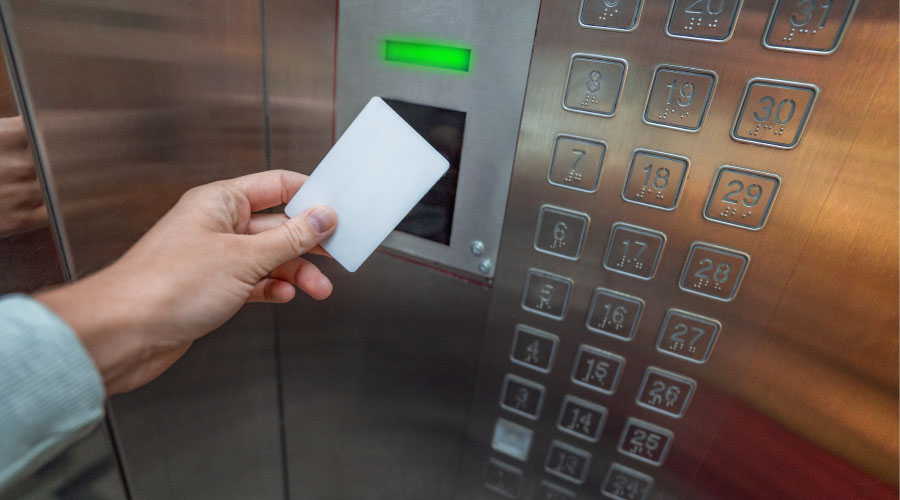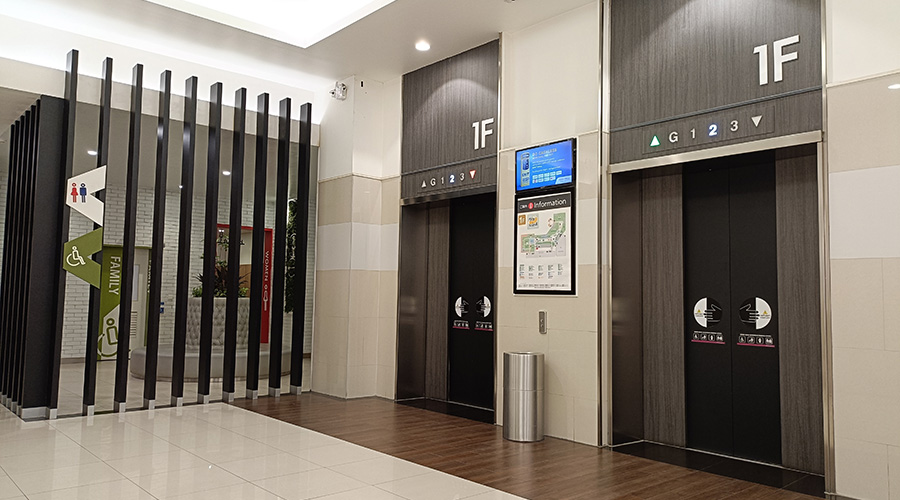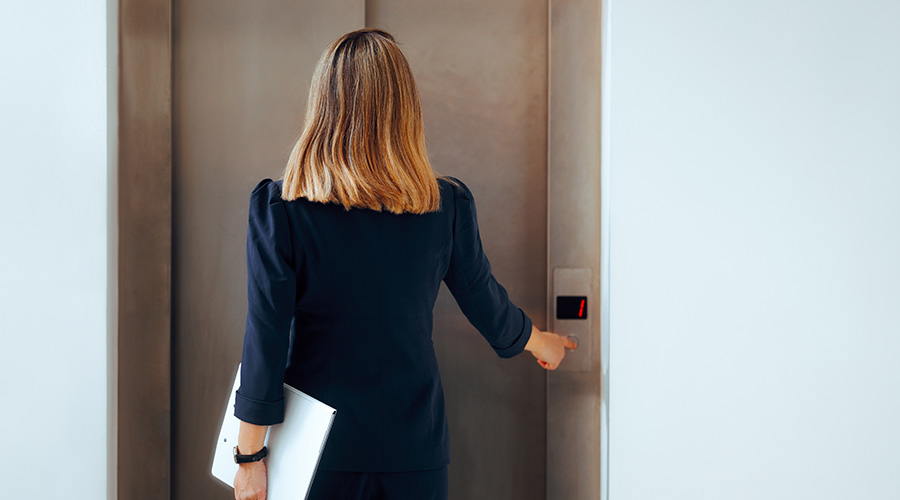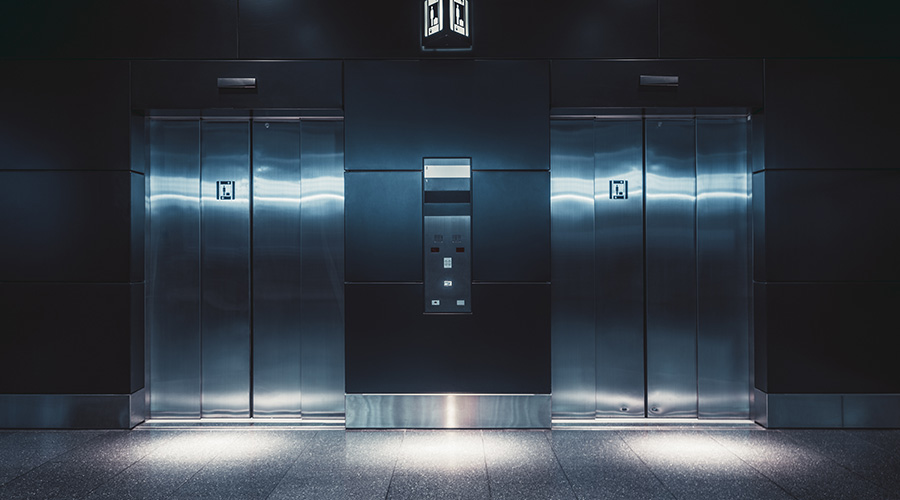Economics of Elevators
Regular preventive maintenance and strategic system upgrades can keep operational costs in check and increase occupant satisfaction
When manufacturers sell facility executives new technology, much of the sales efforts center upon increased savings. Comprehensive return-on-investment calculations are performed, and most savvy facility executives know how to quantify the savings that are recouped with technology upgrades.
For example, facility executives who switch to T5 high-output lighting will benefit from boosted energy savings. Likewise, a reflective roof will reduce cooling costs for facilities in warm weather. But with some technologies, costs can be shifting and difficult to define.
When it comes to elevators, the hard costs of new technology — installing, operating and upgrading — are relatively easy to quantify. But the soft costs, which include considerations that range from tenant retention to productivity calculations, can be notoriously difficult to define.
Often, those costs can only be defined on a case-by-case basis. When a Class A skyscraper has an elevator out of service, the monetary loss of that downtime is significantly different than when a two-story department store has a malfunctioning escalator.
Tenant retention is among the leading reasons cited by elevator and escalator manufacturers when naming the benefits of modernization or replacement. “Lease renewals are one of the biggest reasons to modernize for many building owners,” says Rod Hoyng, vice president of service marketing at Schindler Elevator Corp.
In addition to keeping tenants pleased, many other factors contribute to the savings associated with elevator upgrades. Consistent preventive maintenance, upgrades to control technology and new designs that incorporate the elevator machine room into the hoistway’s walls all lessen costs for building owners.
The first item on the building owner’s elevator to-do list should be assuring good service. “Owners know that when they have elevators and escalators that work and work well, tenants are retained,” says Tom Hubbell, KONE’s assistant vice president of marketing. “But to achieve the optimal level of performance, they need to be properly maintained.”
The most frequent service that elevators require is on the doors. A recent case study from ThyssenKrupp calculated that a 12-year-old elevator system in a hospital had cycled its doors more than 11 million times.
The ‘Door’ to Elevator Servicing
Doors are the only part of the elevator that move twice each time the elevator stops. Doors also take abuse from cab riders, who hold doors open, pry them apart, and force objects into the door sills so that they don’t close.
Considering what elevator modernization costs, many facility executives would be well-advised to minimize service calls and extend the life of the elevator with an aggressive preventive maintenance program.
According to Hoyng, the owner of a 30-story building in the Midwest might pay about $150,000 per elevator for a thorough elevator modernization, and “that doesn’t include any aesthetic costs, like cab refurbishment.” In that same building, he says, the average service contract cost per year per elevator would be $8,000 to $9,000.
To illustrate the importance of service — and what happens when service goes lax — a ThyssenKrupp representative quotes an actual bill one facility executive recently faced. The building, which used two traction elevators serving 15 landings, received a complete makeover of the elevator system for $474,000. “That’s on the high side,” the representative says, “and you can do it for a lot less if you don’t have to replace drive motors and other expensive parts. Keep them in good working order.”
How else to minimize service costs? A remote-monitoring system can be used to determine when to service elevators. The systems monitor fluid levels, report vibrations, and can determine when a technician is required.
Controls and Energy
With the advent of the microchip came significant boosts in elevator-control efficiency. Solid-state control technology, which entered the elevator market approximately 20 years ago, is used on all modern elevator systems.
“Today’s controls are very sophisticated,” says the ThyssenKrupp representative. “They can measure traffic and know when they can shut down two of four elevators, for example.” Such decision-making ability on the part of elevator-control systems conserves energy.
As a purely practical matter, most elevator systems old enough to warrant controls upgrades probably also warrant complete modernization; the improvements would boost reliability and performance.
The energy savings available from new elevator technology varies and is mainly dependent upon the age of the original elevator system.
According to Hubbell, there can be up to two-thirds energy savings when upgrading hydraulic elevator systems to current technology. And when comparing older traction systems to new technology, energy savings is approximately one third.
ThyssenKrupp’s representative gave similar estimations, adding that modern technology on traction elevators can actually regenerate a significant amount of electricity back into the building system, although not enough to power the cabs.
Newer motor and drive technology also saves energy when compared to systems 30 years old or older. Vintage elevator systems use an AC motor coupled to a DC generator. Because motor-generator sets would take two or three minutes to come back online after shutting down — increasing wait times — they usually ran continuously and were notoriously inefficient.
Industry-standard systems now use an AC hoist motor coupled to an AC drive. Not only are the components less expensive — an AC motor costs one-third to one-quarter of what a DC hoist motor does — but the entire system uses about 60 percent less energy than older AC motor/DC generator sets.
Hoyng’s energy-saving estimations are more conservative. Speaking in general energy-savings terms, Hoyng says that “when switching from older technology to new technology, owners will see about a 7 to 8 percent jump in efficiency.”
Smaller Spaces for Technology
New technology has reduced the footprint required for elevator machine rooms. For example, with at least one product, the machines that move the elevator cabs have been placed into the front wall of the hoistway, eliminating the need for a separate machine room.
For new construction, this can be of vital importance, particularly where zoning restricts building height. As an example, buildings in Washington, D.C., must not be constructed higher than the Capitol dome. In such an environment, Hubbell says, elevators without dedicated machine rooms might allow architects to add an extra story of height while still meeting building codes.
While machine rooms are not usually very big, industry estimations indicate that for new construction, facility executives save approximately $30,000 by not incorporating an elevator machine room.
To Modernize or Not?
Although a poor maintenance program is no excuse for modernizing, sooner or later every facility executive will need to modernize the elevator system.
Several considerations, however, can help control modernization costs. For example, it’s important to examine individual facility needs and anticipated use. Most elevator companies are willing to work with facility executives by participating in phased modernization plans, upgrading various systems over time to help spread the hard costs.
Savings can also come in unexpected ways. One manufacturer recommends using vegetable-based oils rather than petroleum products to minimize oil-disposal costs.
Consider other overlooked aspects of modernization that might affect savings. To minimize business disruption, KONE uses a modular escalator system, speeding installation.
“Our ECOMOD uses existing escalator trusses,” Hubbell says. “The system is modular, so we can take out the old escalator system without also having to remove the existing structure. It saves building owners a lot of hassle, and one of the biggest savings comes from the mitigated business disruption.”
Because tenant retention is a key cause for elevator upgrades, aesthetics are worth considering. “The expensive components are what building occupants never see,” says the ThyssenKrupp representative. “It’s worth spending $1,000 to upgrade cab panels and aesthetics to let tenants know that you’ve upgraded the system.”
Loren Snyder, a contributing editor for Building Operating Management, is a writer who specializes in facility issues. He was formerly managing editor of Building Operating Management.
Related Topics:











